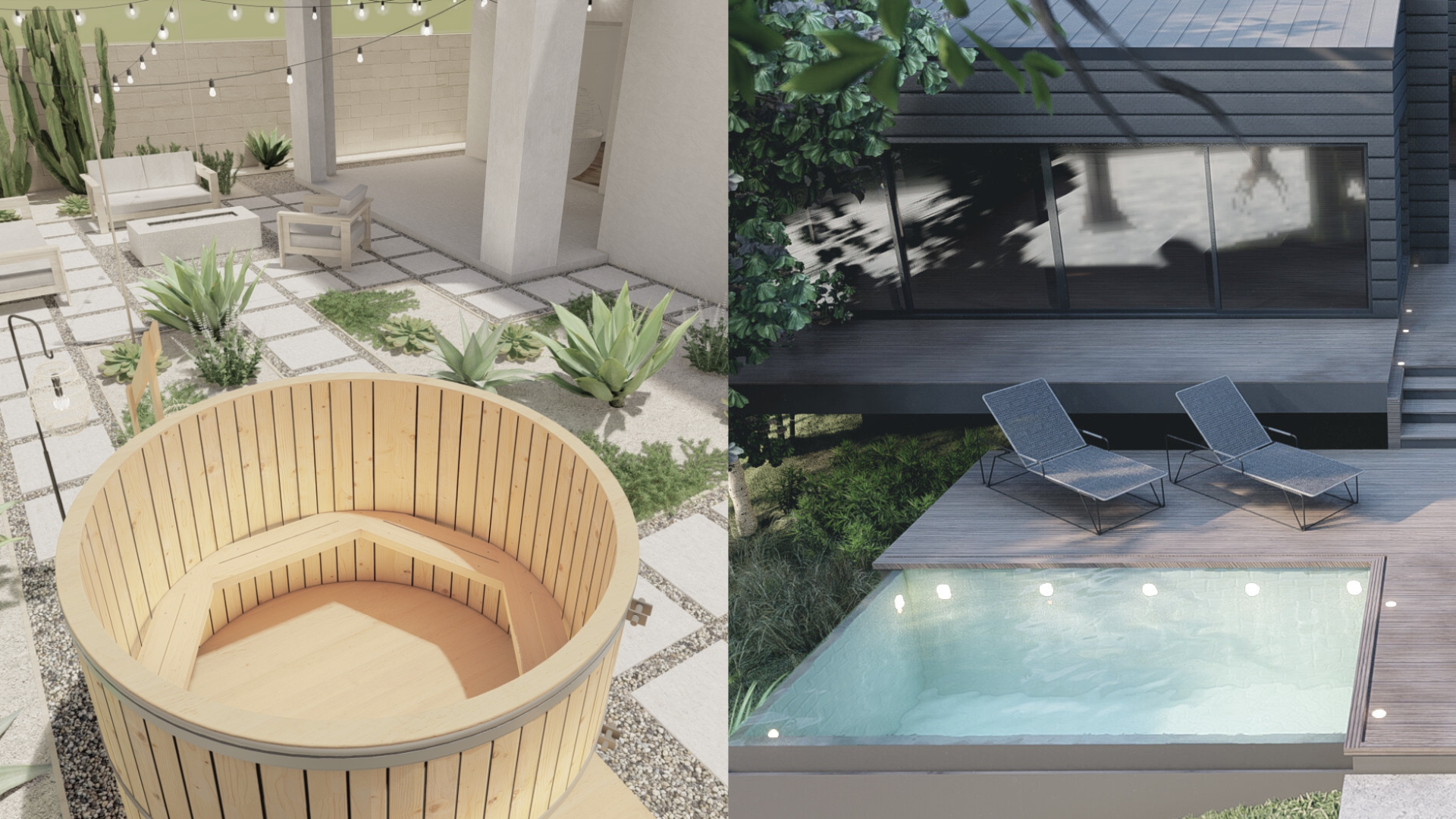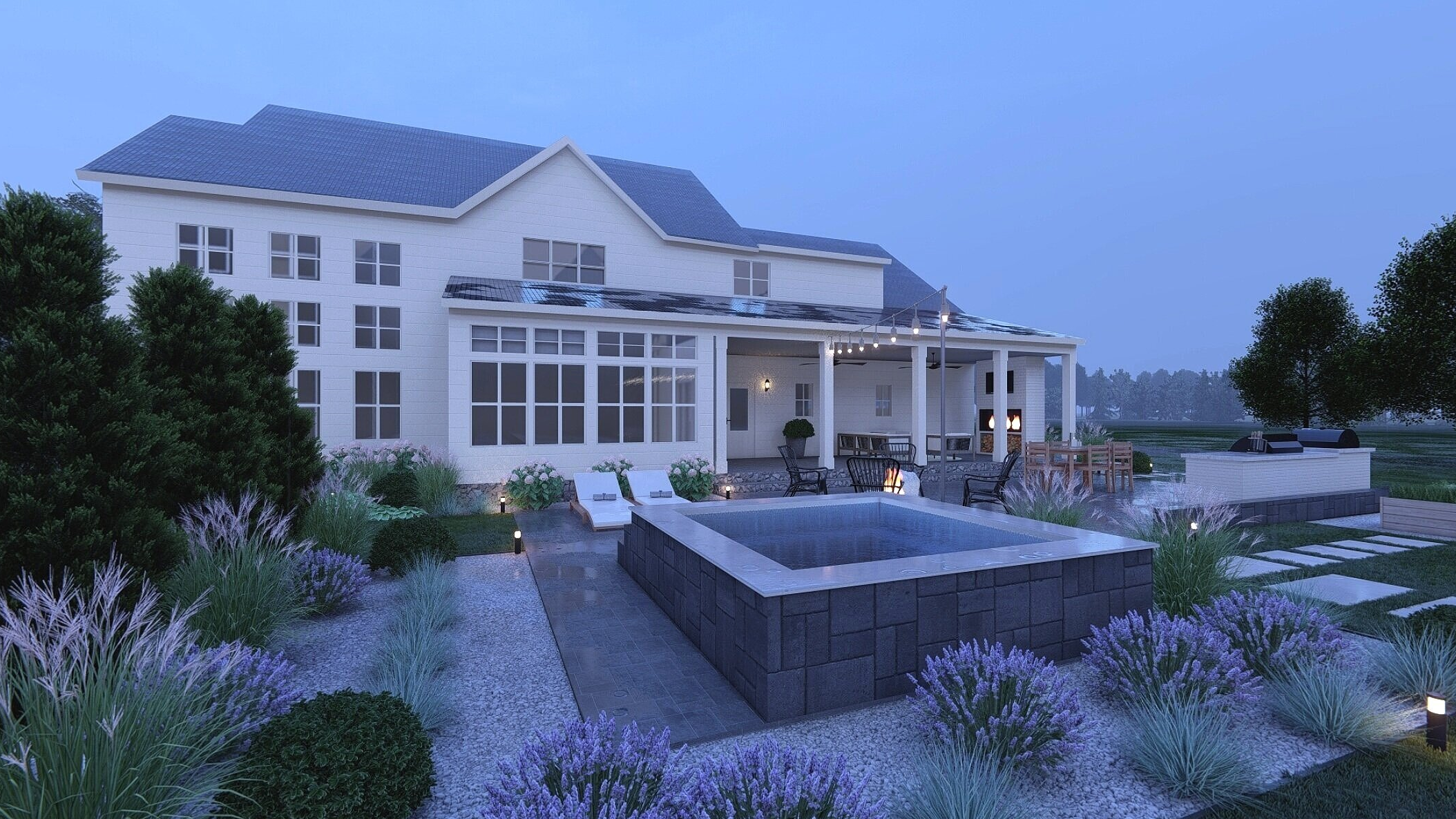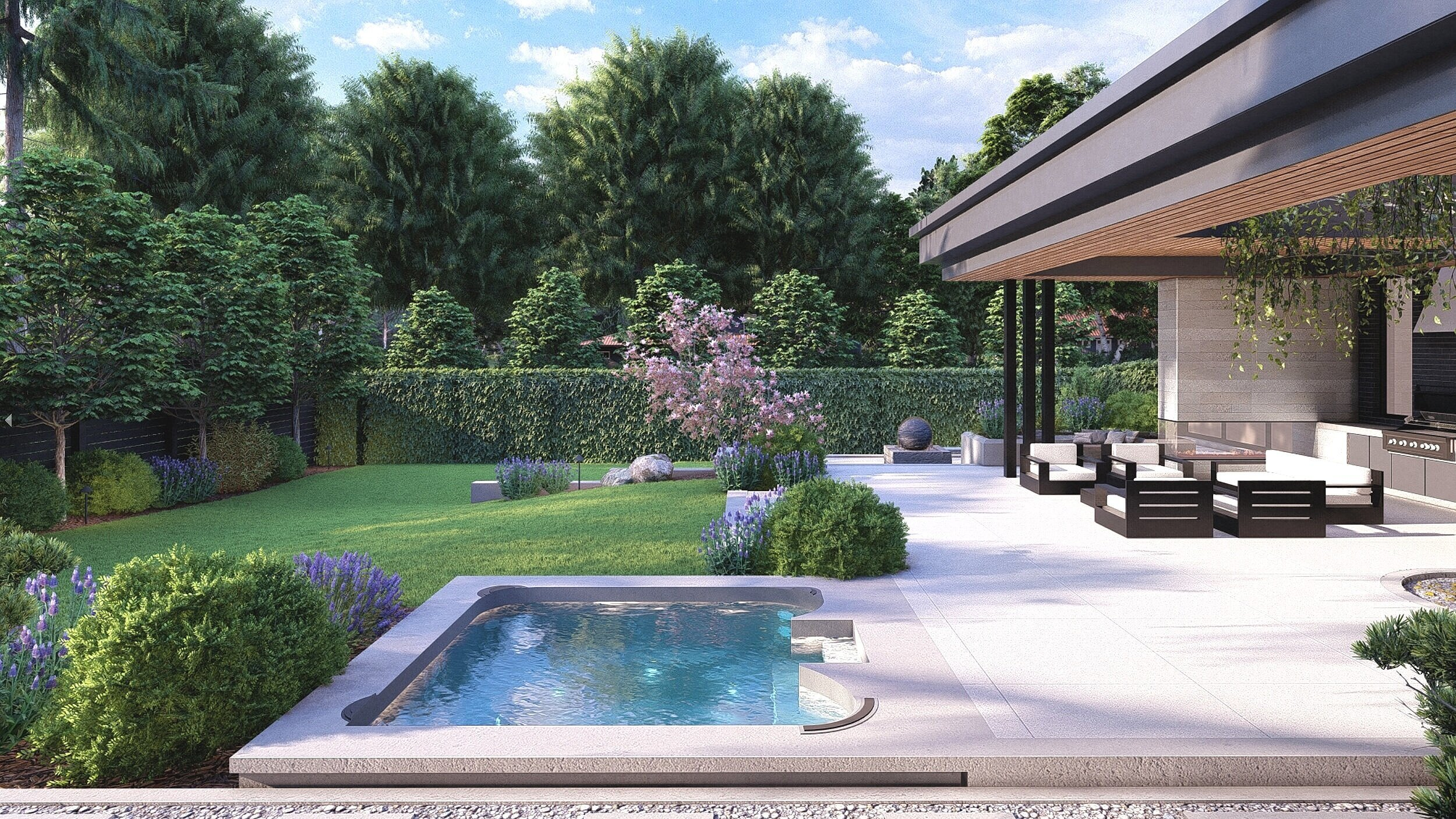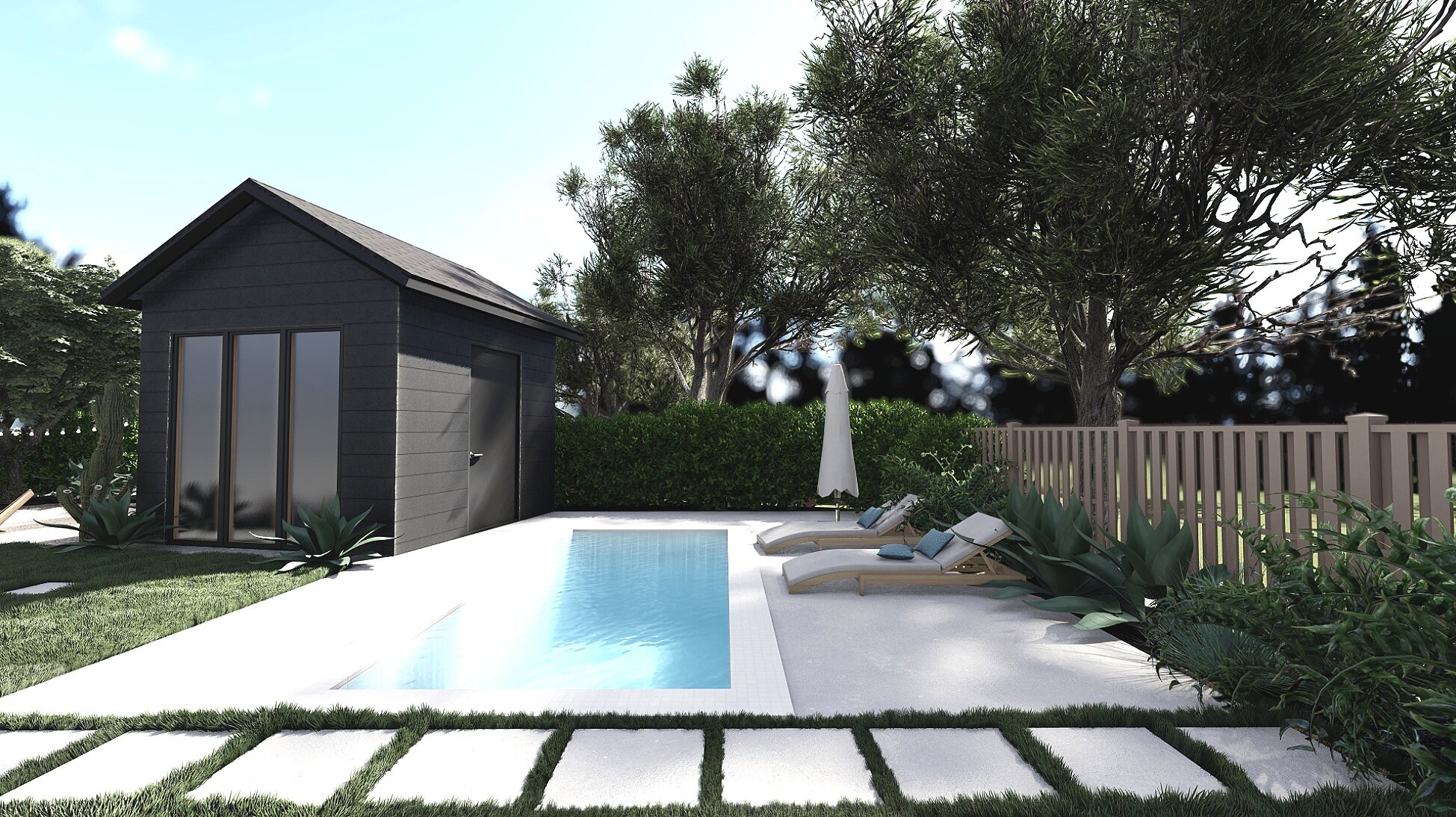Plunge pools are popular, especially where the homeowner has limited space and does not want to spend much money. Installing a pool adds value to the property, and best of all, it won't cost you a lot of money to enjoy its benefits, especially on those hot summer days.
A plunge pool is small to medium-sized, often installed with limited space. Depending on size and material, installing a pool ranges between $7,000 and $35,000. They are constructed from concrete, fiberglass, and vinyl, each with a different installation cost.
These pools are popular, and many homeowners opt for something smaller that is cheaper to install and maintain. Installing a pool can be pricey, and various factors must be considered. If you want to get one, here are some costs and factors to help you make a more informed decision.
Plunge Pools and its Cost
Many homeowners want a pool to cool down in those hot summers but do not have the space for a full-size pool, making this pool ideal. They are smaller than standard size and range from 10 to 20 feet long, 6 to 12 feet wide, and 4 to 8 feet deep.
They come in various shapes, fit into almost any space, and are often the choice for a patio or indoor pool. Like standard pools, they use the same filtering system and cleaning procedure, providing homeowners with a chlorinated and saltwater option.
Like any standard-sized pool, the price varies depending on its size, material, installation, and other features. In general, it is significantly less than a standard-sized pool. A pool like this can cost a homeowner between $7,000 and $35,000. Some pools are very fancy, and some homeowners fit them with features like air bubbles that significantly up their fee.
Calculating Factors of a Plunge Pool's Price
Before you decide to install one, it is essential to determine the charges. Factors affecting the price include location, pool type and material, labor, site preparation, permit fees, shape and size, and geographic location.
Size and Shape of the Pool
A small plunge pool will be less than a larger option because of the labor and material rates. The smaller the pool, the less material and labor you need to complete it, reducing expenses.
It is important to know that even a small pool can be expensive if you make it an odd shape. The typical square and rectangular shape is cheaper to build than a round, curved, or L-shaped pool; deciding on a custom shape can be expensive.
Type of Pool
The type of pool plays a large role; for example, inground pools require excavation that will increase labor costs and sometimes require machinery, depending on the soil. Above-ground plunge pools will save on labor and excavation, but the material still plays a large role.
Some pools are made from fiberglass, others are built with bricks and plastered, and some are cast with concrete, and all these factors affect the cost. Small pools above ground can price only $3,000, with larger ones up to $30,000. Inground plunge pools are more than above-ground pools, costing anything between $10,000 and $35,000. (Related: Inground Pool Cost & Consumer Guide)
Material of the Pool
The material is the largest expense when installing a pool, and there are three main types. The first is the cheapest vinyl, followed by fiberglass and concrete. Fiberglass is more labor-intensive than concrete and often requires specialized labor. Building a concrete one takes longer, and often the finishing, like tiling, painting, and sealing the pool, increases the price.
Location of the Pool
One of the biggest factors relates to a plunge pool's location. Some pools require excavation, and if machinery cannot get access, it will require hand labor which will cost considerably more.
Getting the material, like concrete or the fiberglass pool, to the location will take longer if the location makes accessibility difficult.
Pool requires Labor
Installing pools requires a lot of labor, and concrete and fiberglass pools are extremely labor intensive. Installation time affects the labor; fiberglass requires less installation time, making it a cheaper option. Depending on the pool size, material, location, and preparation can accurately forecast labor prices, which normally range between one and six thousand dollars.
Permits for Inground Pools
If you plan on installing an inground pool, including a plunge pool, you must obtain a permit. The permit fee will vary based on location, ranging from $400 to $1,800. Generally, above-ground pools do not need a permit, but it is best to double-check the regulations in your district before commencing construction.
Site Preparation and Excavation
Preparing the site where you wish to construct your pool leads to high costs and could even exceed the price of the pool itself. If you must remove some trees, you will need to get a tree felling specialist, and often access creates difficulties and increases the rate.
Excavating is another big cost; lacking access often hinders installation and raises budgets. With most pool installations, it is hard to determine what lies beneath the soil, leading to high expenses. At first, the soil seems soft and easy to excavate until you hit some rocks, which instantly increases the labor and price.
Geographic Location
Before installing a plunge pool, research its cost in your area. Labor and permit prices vary depending on your geographic location. Often labor and permit expenses are higher in densely populated urban areas compared to rural locations.
Cost to Build a Plunge Pool by Material
There are a few factors to consider when you select the material for your plunge pool. Between vinyl, fiberglass, and concrete, various factors affect its price. Each material has pros and cons like installation, longevity, maintenance, and cleaning costs.
Concrete
A concrete pool is the most expensive to install, pricing between $20,000 and $35,000. The material is between 18,000 and $29,000, and the labor is between $2,000 and $6,000. A concrete pool lasts between 50 and 75 years and requires regular cleaning to avoid algae growth. Concrete plunge pools sometimes crack and must be repaired to stop leaks and further damage.
Vinyl
A vinyl plunge pool is the least expensive to install, costing between $10,000 and $18,000. The material prices between $9,000 and $15,000, and the labor between $1,000 to $3,000. Vinyl is easy to clean and significantly less than its concrete and fiberglass counterparts, but the vinyl liner lasts between 5 and 10 years, after which it must be replaced.
Fiberglass
Fiberglass is the most popular option for pools, and its benefits far outweigh its vinyl and concrete counterparts. A fiberglass plunge pool costs between $10,000 and $22,000. The material amounts between $8,500 and $18,000, and the labor between $1,500 to $4,000. Fiberglass pools are prefabricated shells and easy to maintain and can last upwards of 30 years.
Final Thoughts
Most homeowners want a pool but cannot afford a large one, making a plunge pool a great alternative. These pools are made from concrete, fiberglass, and vinyl with varying costs. Most of the fees are material but labor, preparation, access, and permits are factors that can increase the price. (Related: 7 Brilliant Ways To Maintain Your Florida Pool – Even A Dummy Can Do It)





